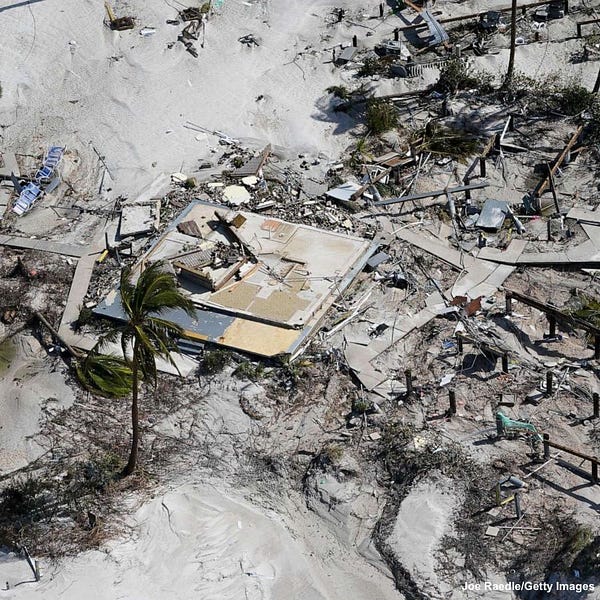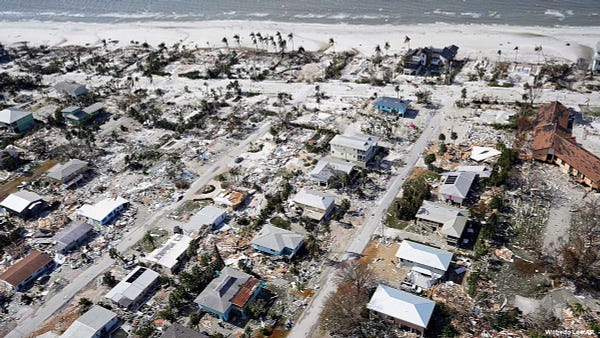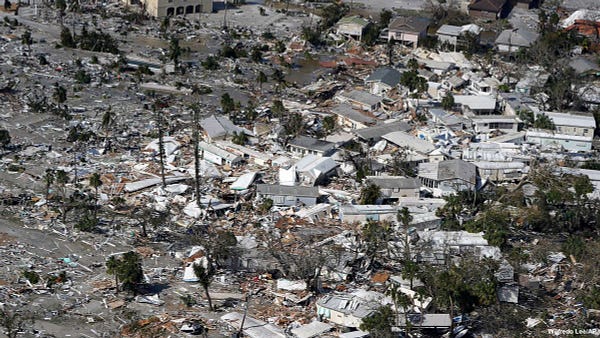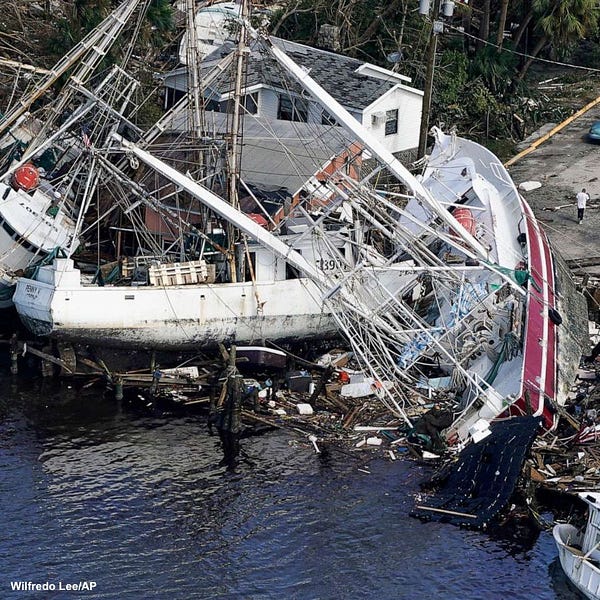It’s becoming clearer how wide and serious the destruction is in Florida from Hurricane Ian. It’s even clearer today than when the video above was recorded late yesterday.
The video here is about ways you can help — or not.
Please pass it along, and spread the word. Share it by sharing this post.
The rest of this post is about this new catastrophe. Also, we’re doing a disaster chat Sunday midday if you have questions, want to connect with folks during these crises, or want to find out more about what’s behind the scenes in disaster response.
How to Help
First — watch the video above. Pass it along by sharing this post. Sharing the word can seriously help people help in ways that are actually helpful and not a hindrance.
Send money not stuff. More about why in the video. Check out National Organizations Active In Disaster (NVOAD) to find a list of reputable groups working on disaster response to send funds to support either Hurricane Fiona or Hurricane Ian responses. Don’t. Send. Stuff.
If you’re interested in volunteering, NVOAD has a great list of orgs to volunteer with. If you are a first responder, check with your local agency and/or state to deploy via national mutual aid through EMAC. Don’t self-deploy.
Donate blood if you’re in a position to. Organizations are already sending blood to Florida, and we’re always in need of it either way.
And please share this post.
Ian Is A Catastrophe
A catastrophe is bigger than a disaster — because of the scale and scope, because of the national or regional impacts, and because of the cascading effects.





The first big, important thing I learned about big disasters years ago is that water is the most damaging force in US disasters. The most damaging.
That’s somewhat counterintuitive to me as a former wildland firefighter, but fire needs fuel. Water can come from about anywhere and go anywhere — and it comes from the sky. And the rivers. And the dams. And the ocean. Etc. Wildfire comes from sparks, sometimes from lightning, pretty often from humans (heavily from cigarettes), and every once in a while from lava… and either way fire needs fuel to carry it (and heat, slope, or wind).
Water is either coming or it’s not. You might be able to re-route it, but you can’t stop it. At about 8 pounds per gallon, a hell of a lot of water brings a hell of a lot of force.
Lots of things don’t survive water: highways, bridges, houses, foundations, trailers, buried pipes, weak or old trees, people in cars, people not in cars, vehicles, and so on. The power of water is where the big money damage comes from in our biggest disasters.
With that being said, it’s looking like water indeed is where the big damage is in this hurricane. That will likely also be an issue in South Carolina although perhaps not as severely as in FL; as this storm has just hit SC head-on as a Category 1 hurricane.
Whether Ian will be the US’ most destructive disaster is hard to tell, and it depends on how you define “most destructive.” In some ways, the damage is more geographically contained than something like Hurricane Katrina; a storm that had massive wind and flood damage from Texas to Alabama. It was such a large impact area that air traffic control was down over much of the region after initial impact, and for a while after. The damage in Ian though is heavily water-related, and in an area that is super heavily populated.
Illustrating that same point, Retired Lt. General Honore was talking about the Hurricane Ian search and rescue efforts and also the damage to homes in an interview today on MSNBC:
“In Katrina we were only dealing with 250,000 homes… Here we may be talking close to… a million homes. I haven’t heard an estimate yet, but it could be that many that got wet from the surge water as well as the flooding through central Florida all the way up through Jacksonville.”
Those numbers are rough, but the contrast is clear — both in population density in the impacted area, and in the geographic scale of the impact.
And this storm isn’t done. It’s just come ashore in South Carolina as a Category 1. South Carolina has all kinds of low-lying areas, more barrier islands just like Florida, economic disparities that impact evacuation capabilities, and so on.
And the US is still dealing with the response to Hurricane Fiona in Puerto Rico within the past few weeks; in an area that still hasn’t recovered well from Hurricane Maria in 2017.
Side-Note: We’re Evolving This Shift
This post has our first-ever Substack video. We’ll see how it goes. Someday when we have more funding, we’re also planning a podcast here. Paid subscriptions help, or donate here.
We’re adding video here as we work to build community and connection, and as other platforms have gotten more complicated. This platform is a great place to grow.
Stay tuned for webinars starting Sunday to help catalyze activity in October. We’re planning to help reach, mobilize, energize, and inspire the majority of voters to vote this fall… from a wide coalition of independent voters, Democrats, and pro-democracy Republicans.
Democracy works better the more people vote. Those online catalyzing events will be announced here on Substack, and via Eventbrite invites.
Be well, be safe, and look after some humans.





Ian Catastrophe: How To Help - Or Not